Are we still fulfilling the Great Commission? 6 key findings by the Lausanne Movement
Juliette Leong // May 21, 2024, 3:26 pm

According to the State of the Great Commission report, the Global South has become the centre of growth for Christianity. Asian countries like India and the Sub-Saharan African countries are seeing the most rapid growth of Christian disciples. Photo from Lausanne.org
Is the Church still obeying Jesus’s commission to make disciples of all the nations and teach them everything He commanded us?
The State of the Great Commission, a report for the fourth Lausanne Congress taking place in South Korea this September, revealed the current global status of evangelism and disciple-making.
A survey of 1,500 Christian leaders from six regions – Africa, Asia, Latin America, US, Europe and Oceania – was conducted in 2022 to gain a snapshot of where the Church stands on the Great Commission.
Researchers estimate 9 million churches emerging from or part of a church-planting movement.
Christianity has seen a clear shift from regions like Western Europe a century ago to the Global South (Africa, Latin America and Asia).
According to the report, Western European nations fall out of the top 10 Christian countries for the first time in modern history.
Christianity will increasingly be a religion of the aged in Europe and North America.
The greatest growth is seen in Sub-Saharan Africa (West, South, East African countries), and this looks set to carry on for decades, fuelled by African youths.
Salt&Light highlights six key findings on the challenges to and opportunities for the Church.
1. Less than half of the Christian population is committed or prepared to share the Gospel
Half of Christians in the US, Europe and Oceania consider the Great Commission optional, say church leaders in these regions. The percentages are lower – 30 to 40% – in Africa, Asia and Latin America.
The majority of respondents also said less than half of their congregation would be able to say what the Great Commission is.
Additionally, less than half are prepared to share the Gospel.
“What percentage of members in your local church would say they feel prepared to share the gospel with others?”
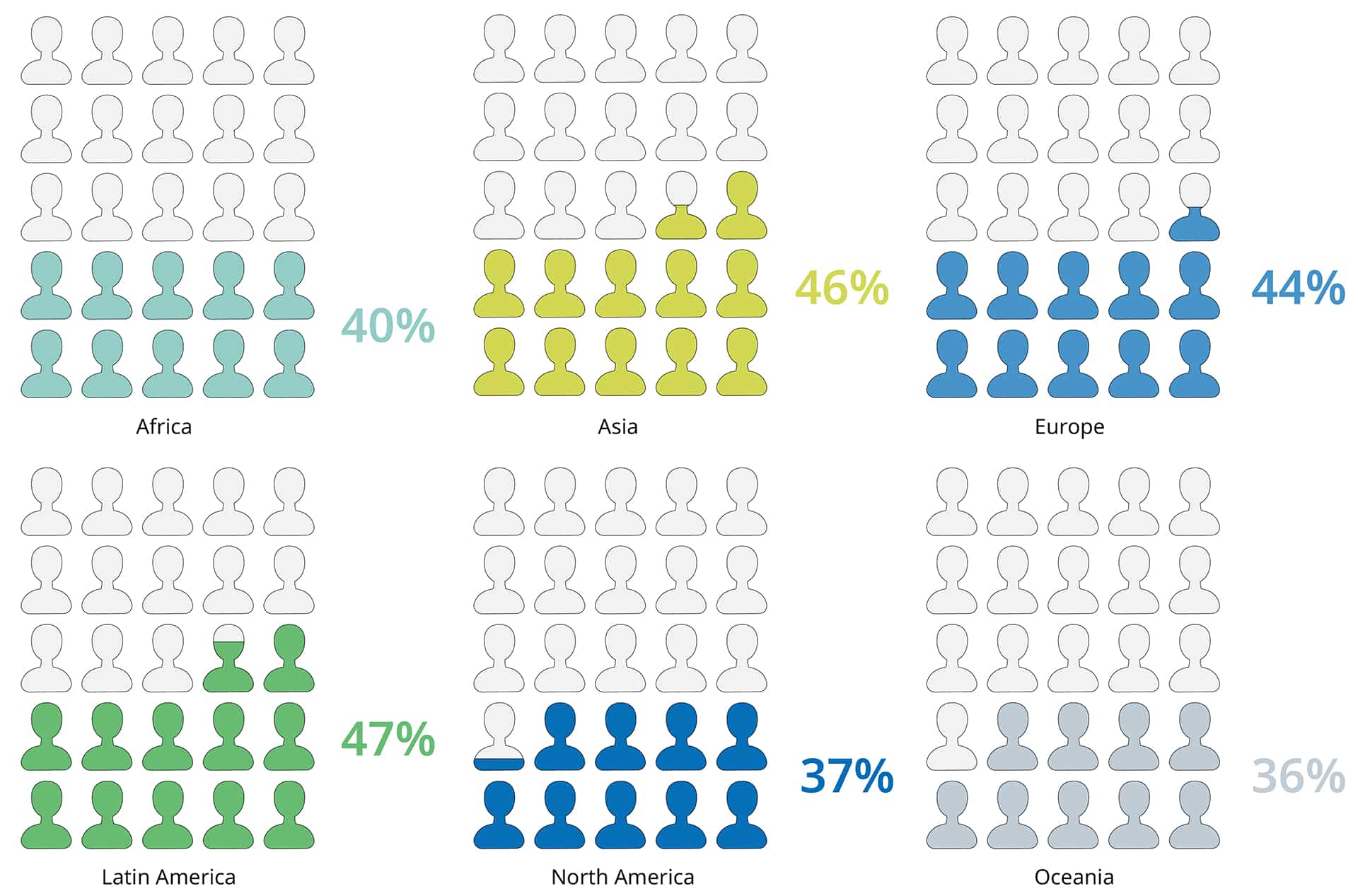
Source: Lausanne Global Leaders Survey 2022
2. Regular teaching not resulting in active gospel proclamation
Of the surveyed leaders, 65% to 80% perceived that churches in their region teach the Great Commission “often” or on a “semi-regular” basis.
97% of missionaries are sent to people who already have gospel access.
But the same leaders felt that only 15% to 20% of the same congregation are “very active” in gospel proclamation.
Further, they perceived that 35% to 40% of their flocks “never or rarely” proclaimed the gospel.
Across the globe, Christians under the age of 30 participated less in gospel proclamation.
This gap between the teaching of the Great Commission and the actual proclamation of the gospel by churchgoers brings into question the effectiveness of current Great Commission discipleship.
“In your perception, how often do churches teach the Great Commission in your region?”
Source: Lausanne Global Leaders Survey 2022
3. Mission work misaligned: Only 3% of international missionaries go to unreached
The unreached (those who have never heard the gospel) make up 40% of the global population. Yet, 97% of missionaries are sent to people who already have gospel access.
Most missionaries go to areas where there is already Christian activity, whether a church, a school or a Christian aid organisation.
This leads to a lack of connection to and understanding of the unreached in those mission areas, and reinforces the alienating idea that Christianity is a Western religion.
More missionaries are sent to Europe than Asia despite the fact that Asia has 60% of the global population and is home to most of the global unreached.
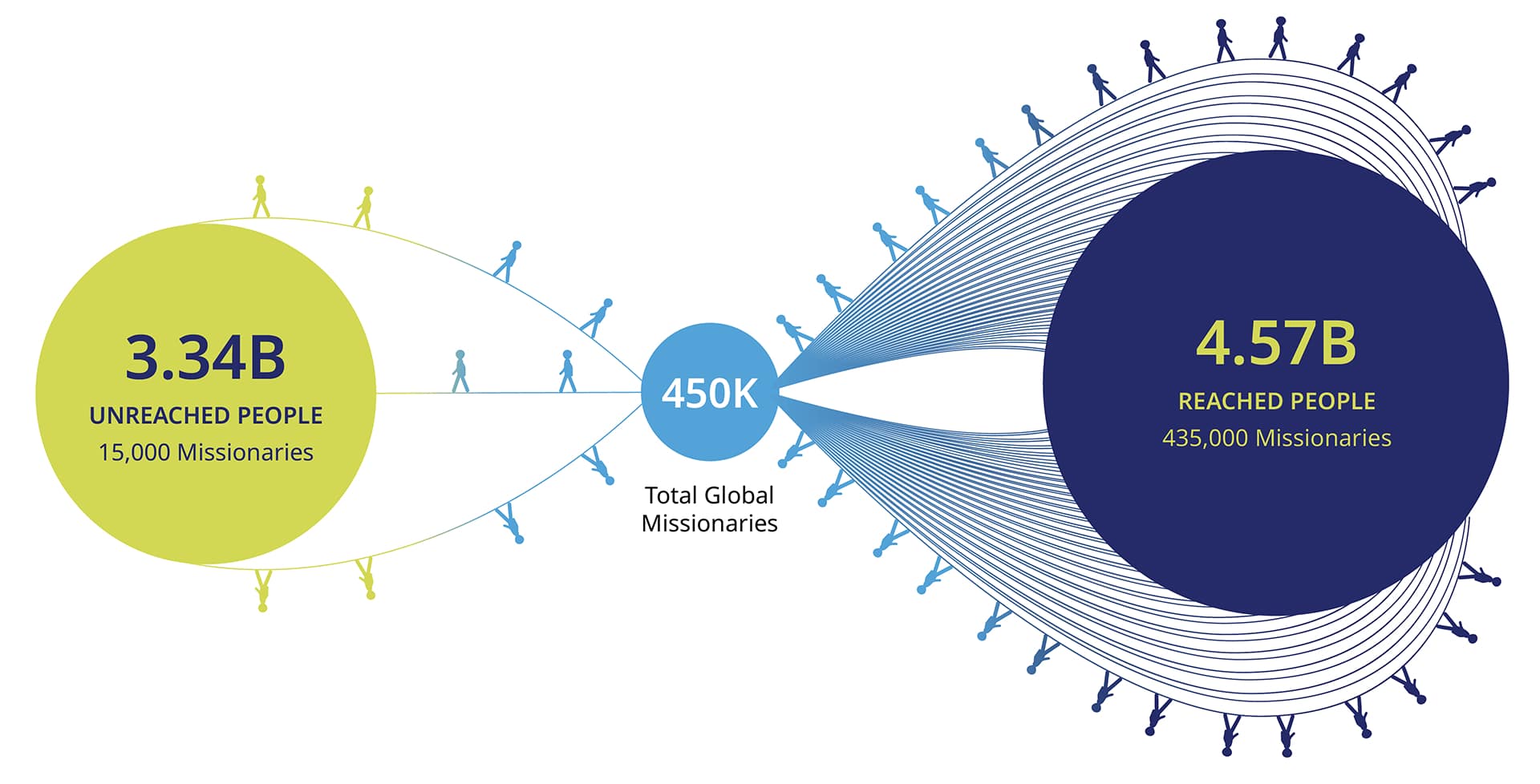
Source: Joshua Project, Aug 2022; B = Billion; K = Thousand. Each line represents approximately 5,000 missionaries.
The cost of sending a missionary to Europe is 10 times or more than sending him to the unreached in Asia or Africa, or that of equipping an indigenous missionary.
Adding to this shift in missions is the trend of polycentric missions: missions is now from every continent to every continent.
Indigenous missionaries are a growing group, which decouples missions from its Western colonial legacy.
4. Growing number of Protestants in the Global South
The Global South broadly comprises Africa, Latin America and Asia. These countries are identified by a poor standard of living, lower incomes, poverty, high population growth, lack of infrastructure, among other issues.
There are more Anglicans worshipping on a Sunday morning in Nigeria than in England.
It is in the Global South that Christianity is booming.
More Protestants are now found in the Global South than Global North, with more Anglicans worshipping on a Sunday morning in Nigeria than in England.
Independents (Christians who do not identify as Catholic, Orthodox or Protestant) are most conspicuous in places like China, Brazil, the United States, and Sub-Saharan Africa.
Growth of independents has fuelled the rise of Christianity in Africa, and independents will likely dominate Christian growth in the Global South for decades to come.
Global Protestantism at a glance:
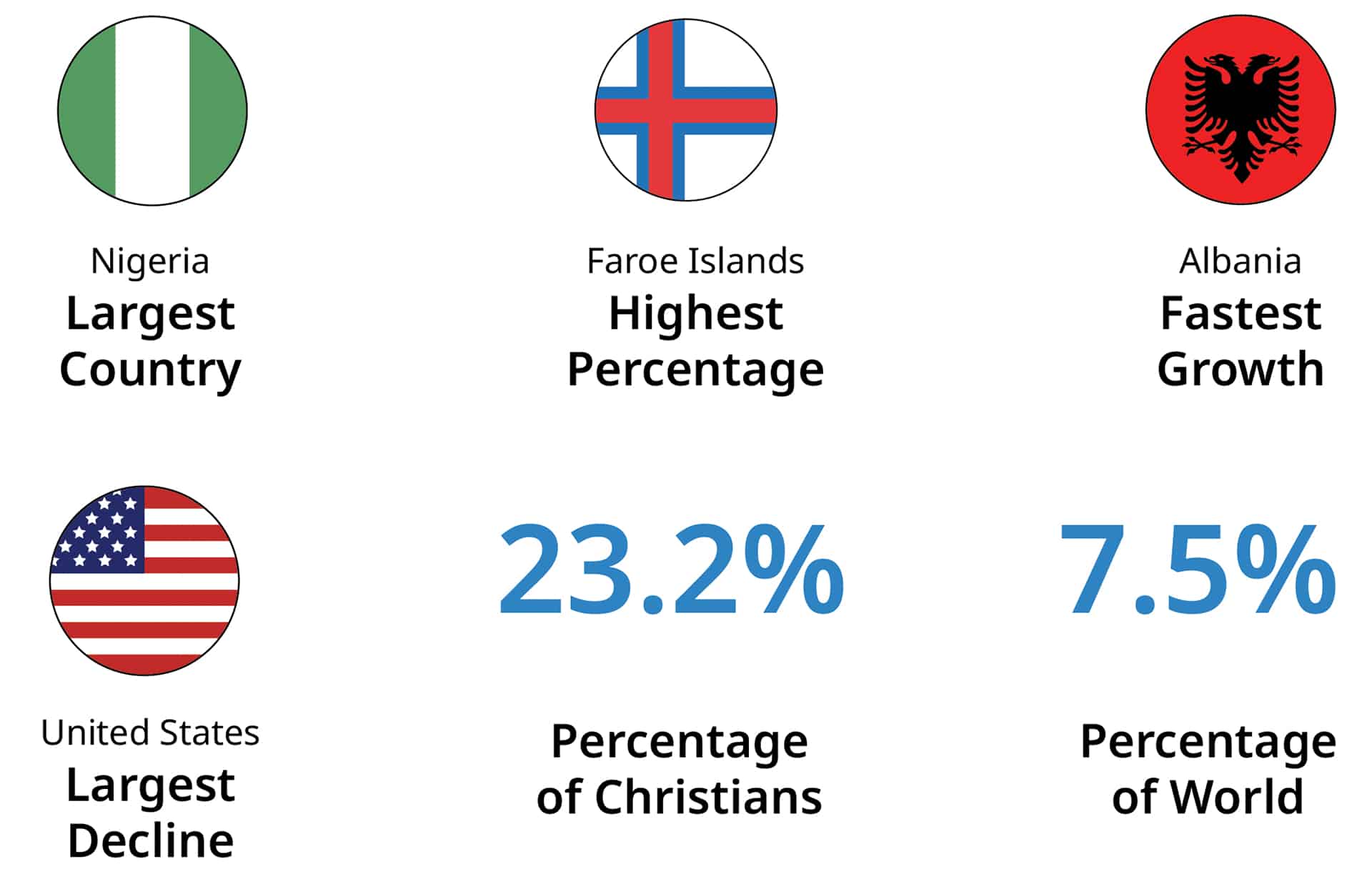
Source: World Christian Encyclopedia, pg 25, 2020.
Independents are a fast-growing sector of Protestant Christianity:
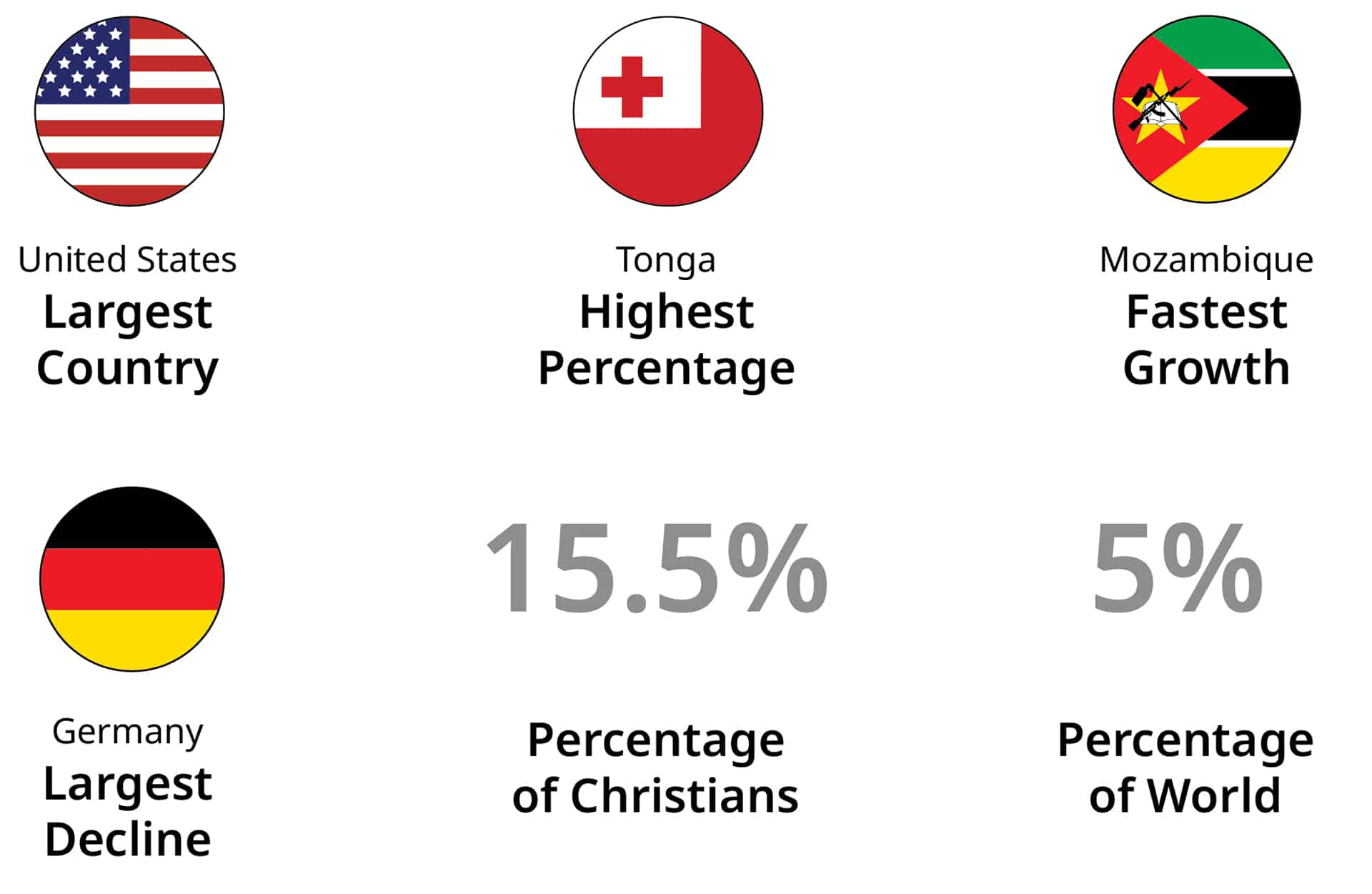
Source: World Christian Encyclopedia, pg 26, 2020.
5. Rise of Evangelicals and Pentecostals
America, the fiscal and institutional centre of evangelicalism, has a declining evangelical population.
These two movements focused on experience, conversion and personal piety have seen rapid growth in the last half a century.
While evangelicals are Protestant, charismatic Catholics also form part of the Pentecostal movement.
Pentecostal and charismatic expressions of Christianity are the face of the rapid growth, renewal, and diversification of Christianity in the Global South.
Latin America and Sub-Saharan Africa are now the demographic centres of global Pentecostalism.
While the majority of evangelicals are now found outside the West, America remains a fiscal and institutional centre for the movement. Its own evangelical population, however, is declining.
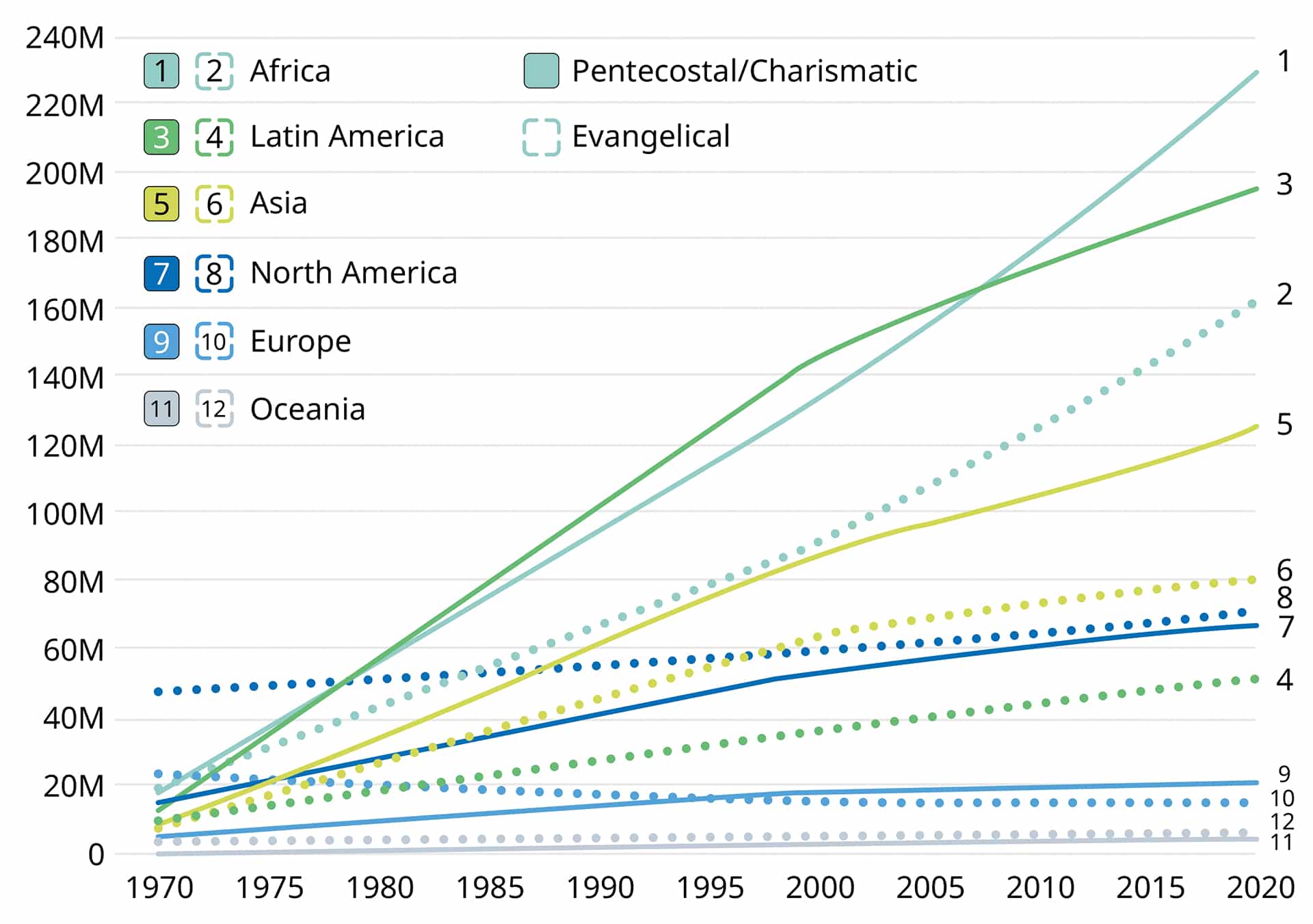
Source: World Christian Encyclopedia pgs. 25-26, 2020; M = Millions
6. Growth of disciple-making movements
Despite decline in evangelism in the Global North, research shows through quantifiable numbers the good news that disciple-making (DMM) and church-planting movements (CPM) are growing.
These movements are defined by three characteristics:
• There are sequential generations of growth. DMM/CPM are identified when there are at least four successful direct generations.
• The movement is dynamic and growing.
• The DMM has created above 1,000 believers, or CPM has planted more than 100 churches.
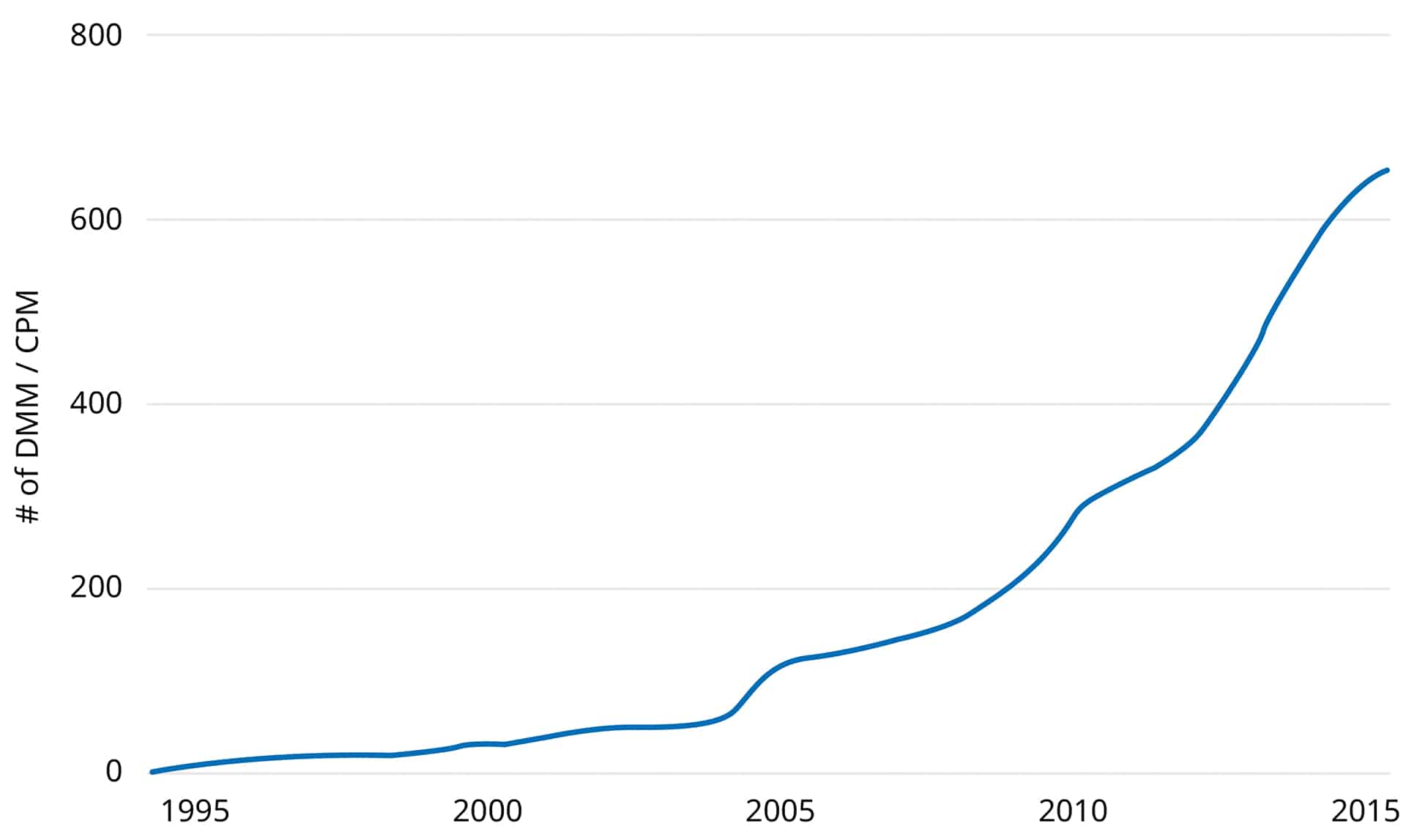
Source: Justin Long, December 2022; Data includes Church Planting Movements and Disciple Making Movements
DMM researchers estimate that there are more than 100 million professing disciples (not all baptised) due to DMM, making around 1 percent of the world part of a DMM.
Additionally, researchers estimate that there are over 9 million churches emerging from or part of a CPM.
Given the understanding that most of these churches are house churches with an average of 14 disciples per church, there are more house churches in CPM than churches in traditional denominations.
We are an independent, non-profit organisation that relies on the generosity of our readers, such as yourself, to continue serving the kingdom. Every dollar donated goes directly back into our editorial coverage.
Would you consider partnering with us in our kingdom work by supporting us financially, either as a one-off donation, or a recurring pledge?
Support Salt&Light



